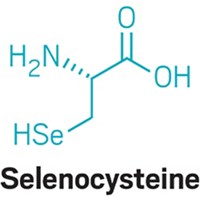Advertisement
Grab your lab coat. Let's get started
Welcome!
Welcome!
Create an account below to get 6 C&EN articles per month, receive newsletters and more - all free.
It seems this is your first time logging in online. Please enter the following information to continue.
As an ACS member you automatically get access to this site. All we need is few more details to create your reading experience.
Not you? Sign in with a different account.
Not you? Sign in with a different account.
ERROR 1
ERROR 1
ERROR 2
ERROR 2
ERROR 2
ERROR 2
ERROR 2
Password and Confirm password must match.
If you have an ACS member number, please enter it here so we can link this account to your membership. (optional)
ERROR 2
ACS values your privacy. By submitting your information, you are gaining access to C&EN and subscribing to our weekly newsletter. We use the information you provide to make your reading experience better, and we will never sell your data to third party members.
Materials
Researchers create living cells containing the smallest genome yet
Minimal bacterial genome contains 473 genes, 149 of which still have unknown functions
by Celia Henry Arnaud
March 25, 2016
| A version of this story appeared in
Volume 94, Issue 13

Researchers are a step closer to figuring out the minimum number of genes required to sustain life. Clyde A. Hutchison III and J. Craig Venter of the J. Craig Venter Institute, in La Jolla, Calif., and coworkers have designed and synthesized the smallest bacterial genome yet known (Science 2016, DOI: 10.1126/science.aad6253).

The researchers started with a genome they’d first synthesized in 2010, which contained 900 genes from the bacterium Mycoplasma mycoides (C&EN, May 24, 2010, page 10). They then used information from the biochemical literature to identify genes they could remove and still sustain bacterial life, forming a hypothetical “minimal genome.” But a genome produced from that design was a failure: When inserted into a recipient cell, it couldn’t sustain life.
After adding genes back in three more rounds of design and testing, the researchers ended up with a genome containing 473 genes that could form viable bacteria. They were surprised by how many “quasi-essential” genes they retained in the designer genome. Those genes weren’t necessary to keep the cell alive, but they were necessary for robust cell growth.
Christopher Voigt, an expert on synthetic biology at Massachusetts Institute of Technology, doesn’t know whether those genes needed for growth are significant. “It’s an open question whether an organism with a human-designed simplified genome can achieve the same growth as a natural one,” he says. “Is the inherent complexity a necessity, or is it disposable?”
Surprisingly, the researchers still don’t know the function of 149 genes in their designer genome. And that’s why robust growth wins out over an absolute minimum genome. “We’re interested in an organism with a workable growth rate so we can determine the functions of the remaining genes,” Hutchison says.





Join the conversation
Contact the reporter
Submit a Letter to the Editor for publication
Engage with us on Twitter